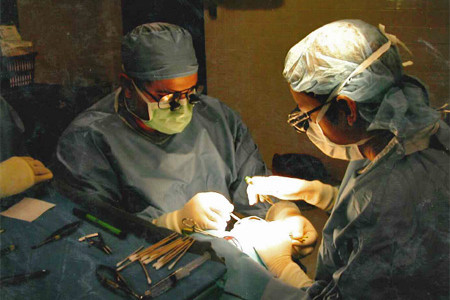EDUCATIONAL MATERIAL
What is a cataract? Cataract surgery has become arguably one of the safest and easiest surgeries an individual will have in their lifetime. However until now, the eye drops associated with the post-operative period following surgery was unavoidable. While patient satisfaction is high after surgery, the most complaints stem from these eye drops. Concerns regarding drops vary from high costs, to confusion associated with the frequency of drops (some drops may need to be used once a day, while another may be four times!), to the difficulty of actually administering the drops.
Cataract surgery is a procedure to remove the lens of your eye and replace it with an artificial lens. The surgery is used to treat the clouding of the normally clear lens of your eye.
There are many misconceptions about cataracts. Many people mistakenly think a cataract is a tumor or growth inside the eye that occurs in the elderly. Actually, a cataract is the name we give to the lens of the eye once it has turned cloudy. We are all born with a lens, and in the majority of people, the lens is crystal clear until about their 50’s or 60’s. Then, the lens starts undergoing an accelerated aging process. During this time, the lens changes color from clear, to yellow, to brown. Opacities form within the lens, and the lens increases in size. All of these changes cause gradual loss of vision.
 Dr. Goulas performing cataract surgery
Dr. Goulas performing cataract surgery
Here is a list of common problems cataracts cause:
- Seeing at night to drive
- Reading small print
- Reading traffic or street signs
- Doing fine handwork like sewing
- Watching television
- Poor night vision
- Seeing rings or halos around lights
- Glare from oncoming headlights
- Hazy and/or blurry vision
- Seeing well in poor or dim light
- Poor color vision
- Double vision
If a cataract is mild, a new glasses prescription will commonly alleviate the problem. However, once the clarity of the lens is lost, new glasses will not be effective. It is at this point that surgical correction is the only option to regain clear vision. Cataract surgery is one of the most commonly performed surgeries in the United States, as well as being one of the safest. It is almost always done in an outpatient setting, meaning you go home after surgery without staying the night in the hospital. You will need to arrive at the hospital at least one hour prior to your scheduled surgery time, in order to get registered and prepared for surgery. You will have an IV placed, and a number of eye drops will be given to dilate the pupil and numb the eye. Once it is time for surgery, you will be given some medicine to relax you and then be taken to the operating room. It is important to know that you will not be put to sleep for your surgery. Your eyelids will be cleansed and drapes will be placed over your face and body to ensure a sterile working environment. Patients who are claustrophobic or having trouble laying flat should let the doctor know so that additional measures can be taken for your comfort.
During the surgery, you will see a bright light from the microscope. It is important that you maintain a steady focus on this light during surgery, as this will help keep your eye still. You may feel some pressure during the surgery, but anything more than that would be uncommon. It is important you let me know if you are uncomfortable so that we can give you more medicine. I do not want this experience to be painful or cause you any undue anxiety. Once the cataract is removed, a new prescription lens will be placed inside your eye. There are many different types of lenses available, and in many cases it is possible to customize the lens choice to fit your desired outcome. The entire surgery takes about 15 minutes to complete.
You will also be expected to show up for exams at one day, one week, one month, and six months postoperatively. We never can predict the final visual outcome on the day after surgery. The eye needs some time to heal in order to regain full visual function. However, most patients see well enough to drive a car without glasses by one week after surgery. The final result is judged at the one month exam. It will be at this time that a new glasses prescription will be given if desired.

